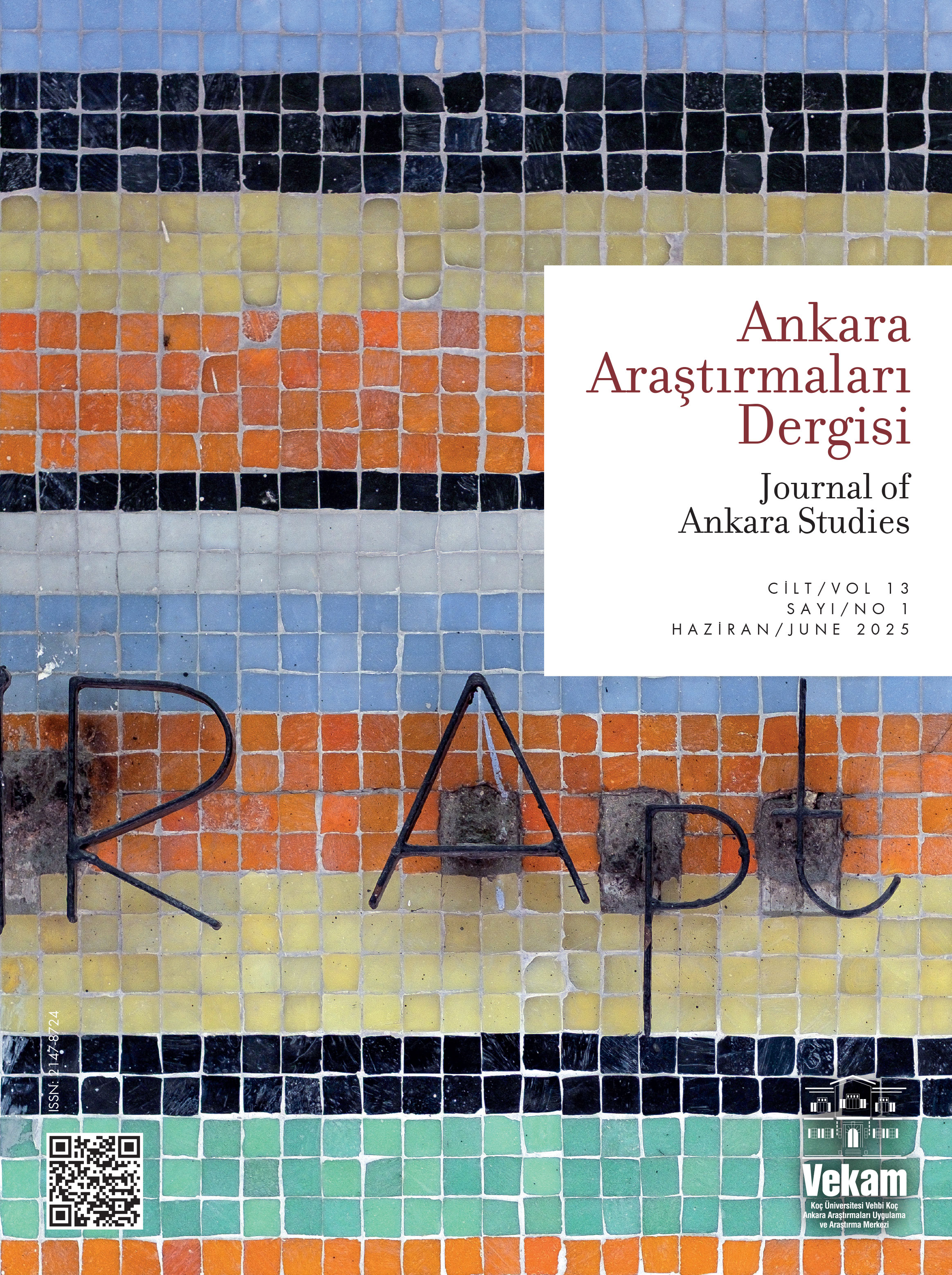Ahlak Dışı Nesneler: Ulus’ta Kentsel Dönüşümün Bir Psikocoğrafyası
Burak Taşdizen1, Harun Kaygan21Özyeğin Üniversitesi, Mimarlık ve Tasarım Fakültesi, Endüstri Ürünleri Tasarımı Bölümü, İstanbul2Orta Doğu Teknik Üniversitesi, Mimarlık Fakültesi, Endüstri Ürünleri Tasarımı Bölümü, Ankara
Bir zamanlar genç Cumhuriyet’in siyasi ve ekonomik merkezi olan Ankara’daki Ulus semti, kentin hem cumhuriyetçi hem de manevi geleneklerine ev sahipliği yapmayı sürdürmektedir. Önce gecekondularla sarılmış, sonrasında Kızılay’ın, başkentin yeni ekonomik merkezi olmaya başlamasıyla geri plana itilmiş semt, düşük gelir gruplarına terk edilmiştir. Günümüzde Ulus’un kendine özgü, çok katmanlı karakteri, kentteki önemli bir dini alan olan Hacıbayram’ın temsil ettiği manevi ve ahlaki değerleri gölgede bıraktığı iddiasıyla hedef gösterilmekte ve bu gerekçeyle bir kentsel dönüşüme tanıklık etmektedir. Bu makalenin amacı, psikocoğrafi bir yöntem kullanarak Ulus’un pazarlarında görüldüğü iddia edilen bu “ahlak dışılığın” izini sürmektir. Mevcut kentsel dönüşüm literatürünün sınıfsal yer değiştirmeye yaptığı vurguyu destekleyecek şekilde, dönüştürücülerin söylemsel müdahalelerinin deneyime dair temellendirmelerini görünür hale getirmeyi hedeflemektedir. Bu amaç doğrultusunda, Ankara Büyükşehir Belediyesinin 2008-2016 yılları arasında yayımladığı bültenler taranmış; sonrasında İtfaiye Meydanı ve Telefoncular Pazarı gibi farklı bölgelerde, raflarda sunulan nesnelere ve bu nesnelerin sunumuna dair bir dizi gözlem yapılmıştır. Ortaya çıkan öznel harita, Ulus’taki “ahlak dışılık” hissine doğrudan etkisi olan maddi kültüre, bu maddi kültürün davet ettiği önemli pratiklere ve farklı toplumsal gruplara dair içgörüler sağlarken bu hissin üç bileşenini öne çıkarmaktadır: ekonominin kayıt dışılığı, mevcut erkeklik rejimi ve çatışan nostaljiler.
Anahtar Kelimeler: Kentsel dönüşüm, Psikocoğrafya, Alternatif ekonomi, Hegemonik erkeklik, Nostalji, Ulus, Ankara
Immoral Objects: A Psychogeography of Urban Transformation in Ulus
Burak Taşdizen1, Harun Kaygan21Özyeğin Üniversitesi, Mimarlık ve Tasarım Fakültesi, Endüstri Ürünleri Tasarımı Bölümü, İstanbul2Orta Doğu Teknik Üniversitesi, Mimarlık Fakültesi, Endüstri Ürünleri Tasarımı Bölümü, Ankara
Once the political and economic center of a thriving, young Republic, Ulus neighbourhood in Ankara continues to host elements of both the city’s republican and religious traditions. The district, first surrounded by slums and then neglected after Kızılay became the capital’s new economic center, has been left to low income groups. Today, the distinctive and multi-layered character of Ulus is being targeted and condemned for having overshadowed the spirituality and morality of Hacibayram, a significant religious site in the district, and has been witness to a major urban transformation on these grounds. The aim of this paper is to trace the “immorality” that is claimed to prevail in the bazaars of Ulus through the employment of a psychogeographical methodology. In line with the emphasis on urban replacement in the current literature on urban transformation, this paper reveals the experiential justifications behind the gentrifiers’ discursive interventions. For this purpose, Ankara Metropolitan Municipality bulletins published between 2008 and 2016 were surveyed and a series of observations were made in different areas in Ulus, including the bazaar areas of Itfaiye Meydani, Telefoncular Pazari, etc., looking closely at the different objects offered on the shelves, as well as how they were presented to the passers-by. The emergent subjective map provides insight into the material environment, significant practices and different social groups invited into the area, unraveling the three main constituents of this alleged immorality: the prevalent alternative economy, current regime of masculinity, and conflicting nostalgias.
Keywords: Urban Transformation, Psychogeography, Informal economy, Hegemonic masculinity, Nostalgia, Ulus
Makale Dili: Türkçe













